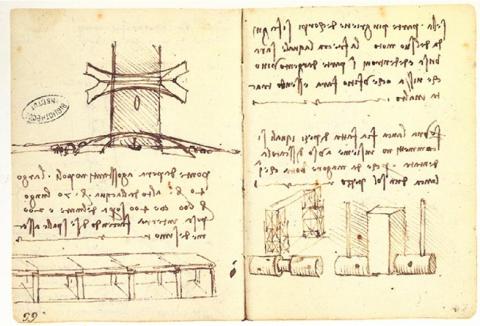The dual role of bridges as instruments of offense and defense stimulated engineers to seek new modular designs that would be easy to transport and impress noble princes and civic administrators who employed their services. Hence, we can place Leonardo's first interest in bridges within a military context.
We have good evidence of this from his famous letter of introduction to Ludovico Sforza of Milan offering his services as both artist and engineer. This letter (Codex Atlanticus, folio 1082r) is the oldest record documenting his involvement with bridges were as part of an engineer's technical capabilities.

Of all Leonardo's bridge design, the Self-Supporting is certainly the most ingenious when it comes to the simplicity of its structure and construction. We do not know whether this bridge was ever put to practical use, but it's not hard to believe that such a modular construction, so easy to transport and assemble, must have met with great favour from the Renaissance lords who were always on the lookout for new technologies to put to military use. It is in fact a structure composed of simple circular section beams, which are assembled, without the use of fastenings or interlocking joints.
The workmen need to enter the water to build it from the river otherwise it has to be assembled on the bank. In order to make the structure stand, all four of the bridge's leg supports must always touch the ground. If, once you have assembled the bridge, you try to lift it by only two of its legs, you will see the whole structure collapse like a house of cards. To avoid such first-stage difficulties, beams of the same length as the required span must be fixed to keep the legs steady and provide the necessary counterforce to keep the bridge upright.